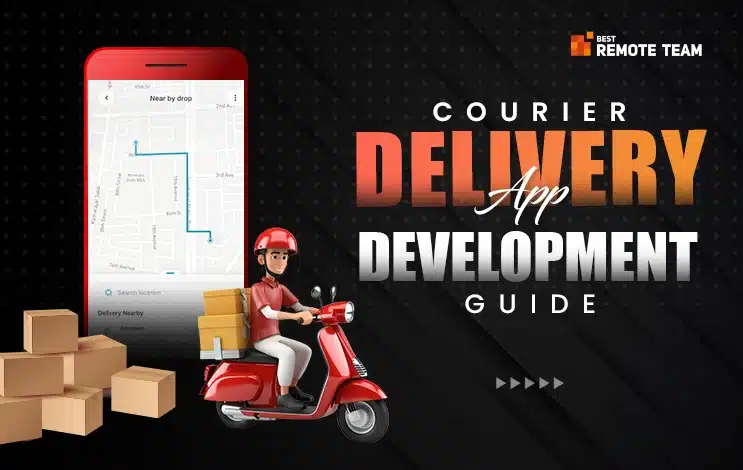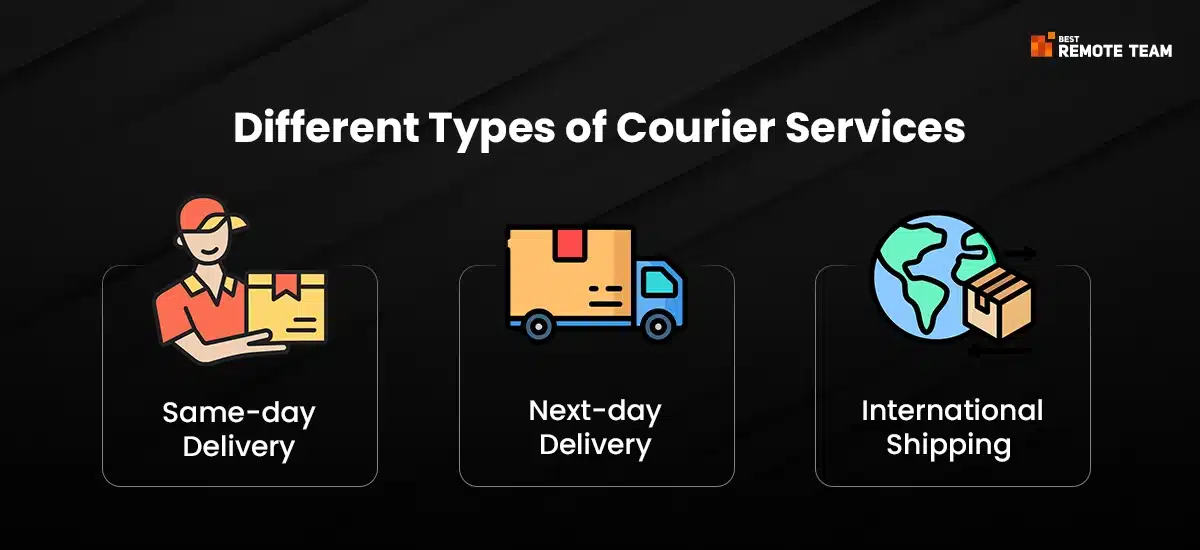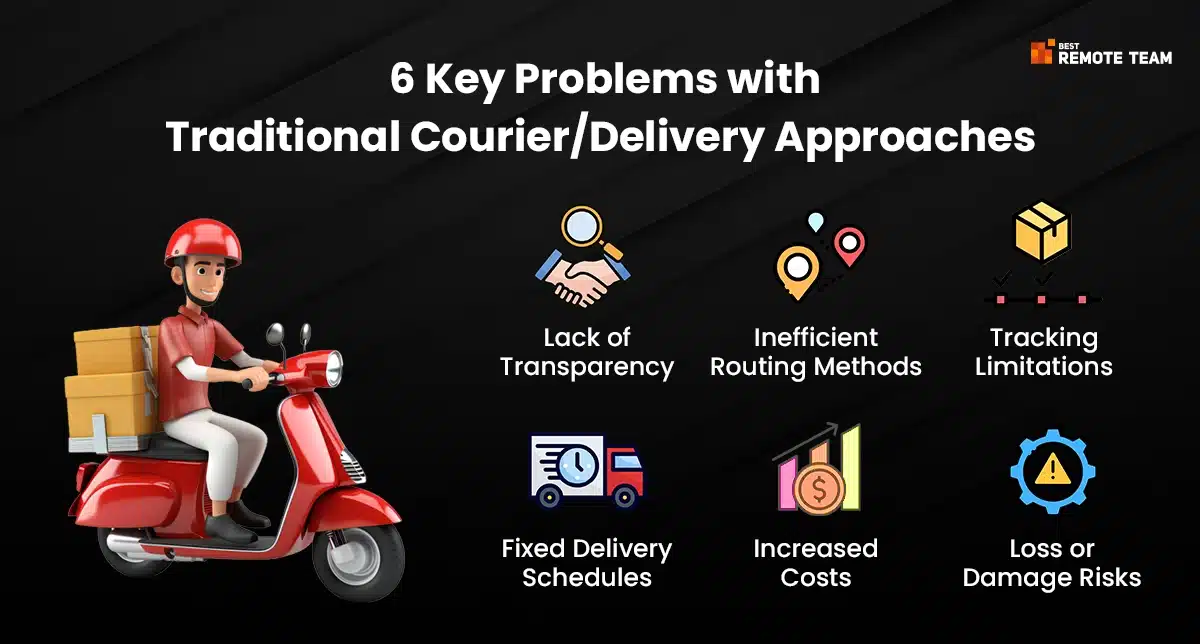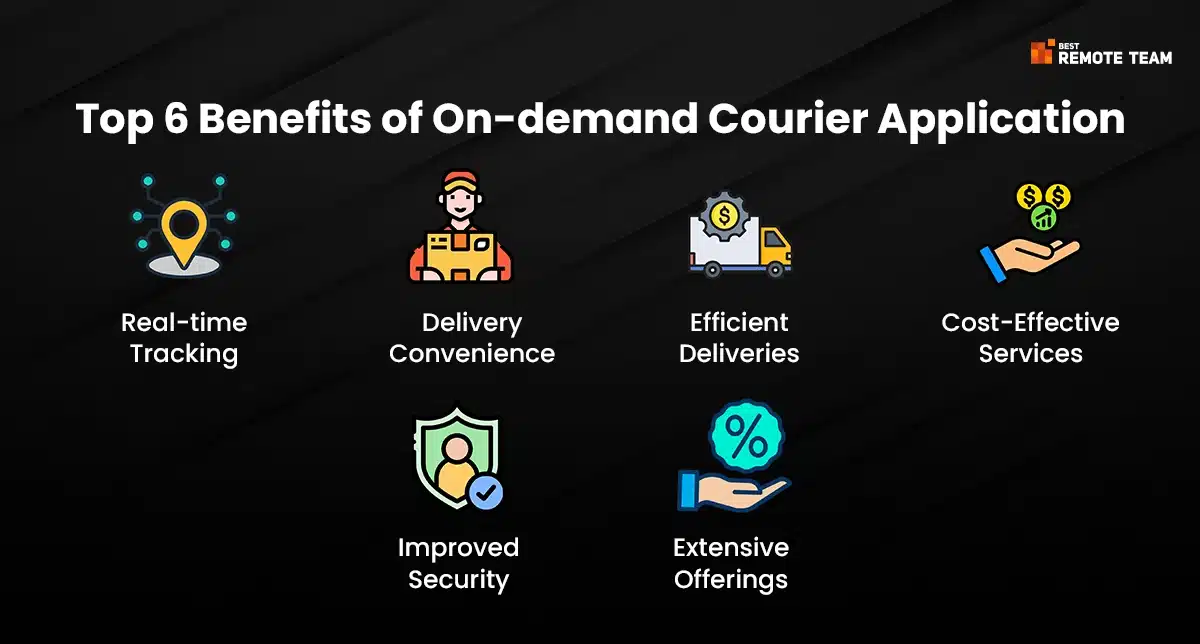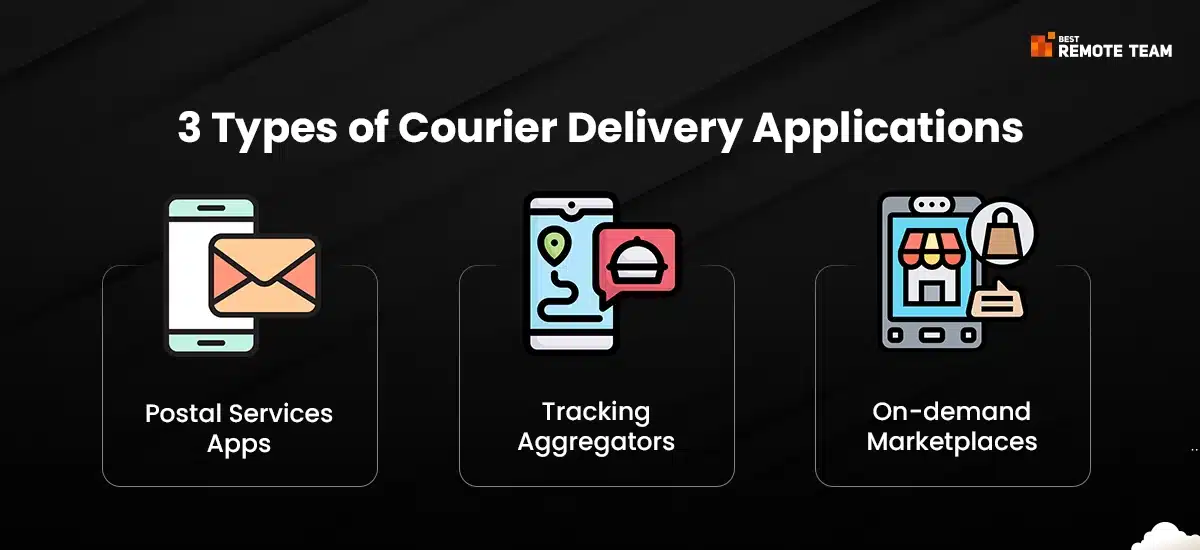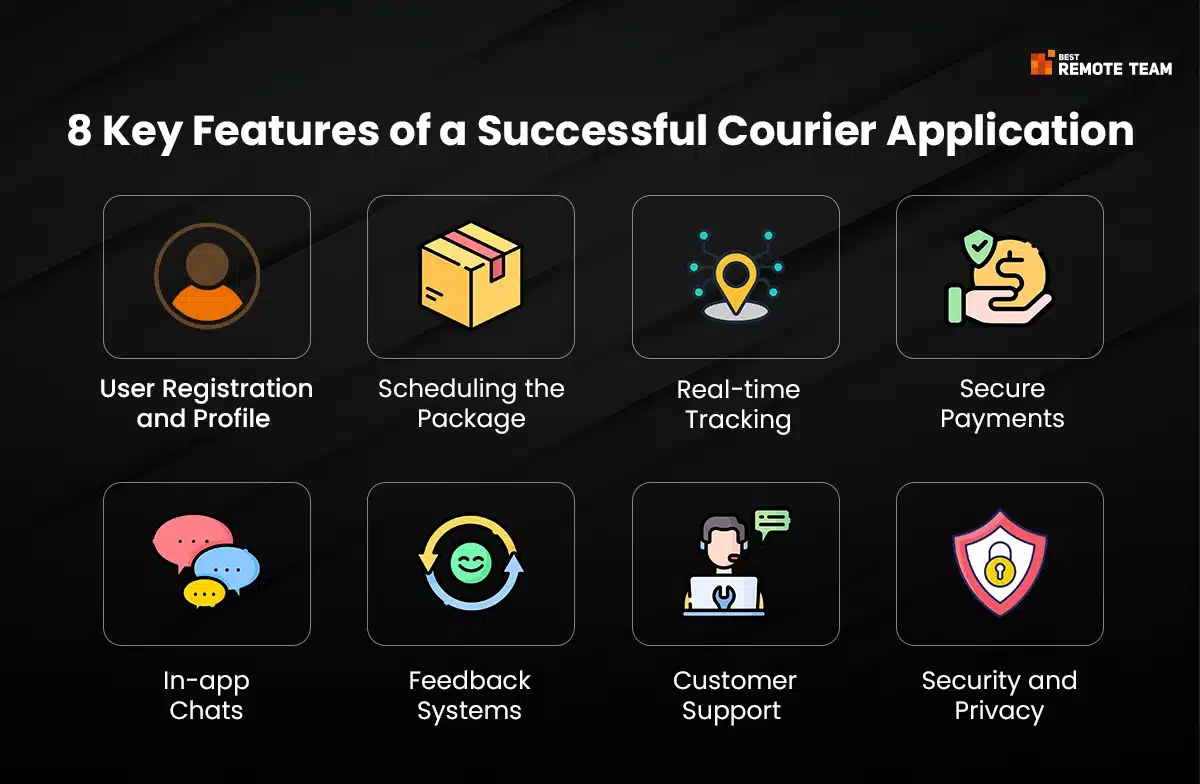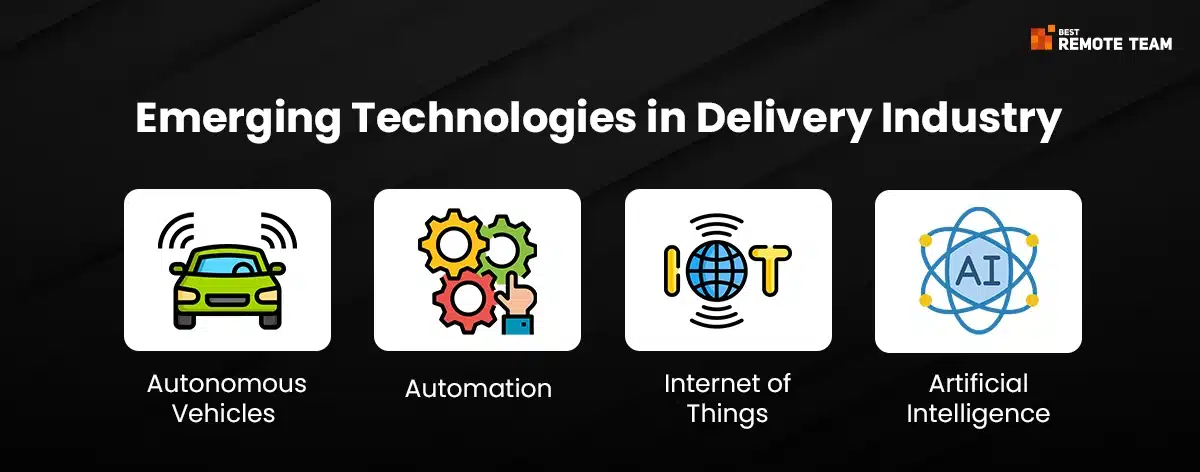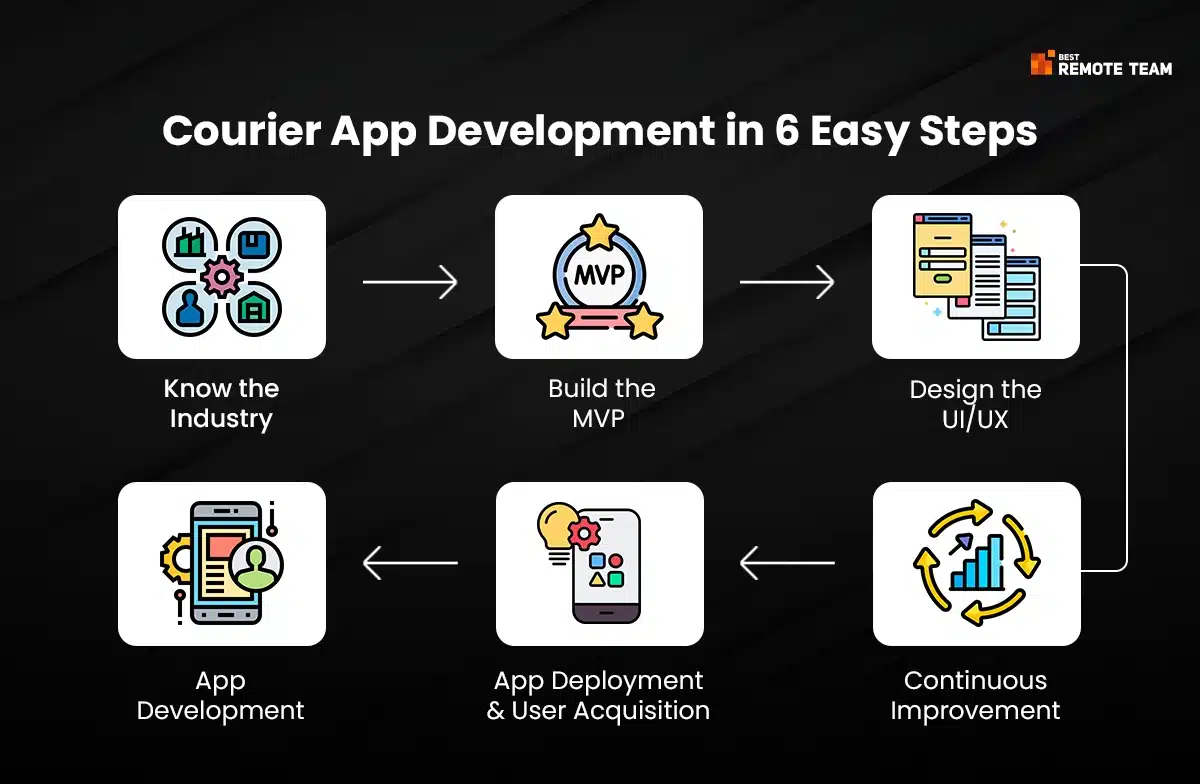6 Key Problems with Traditional Courier/Delivery Approaches
The traditional courier delivery approaches have been working on ensuring timely deliveries for decades. They have been sustaining the supply chain, and ensuring smooth operations. However, there are challenges that you face when integrating the traditional approaches.
#1 Lack of Transparency
The delivery process is very opaque. This means you aren’t sure where the package has reached and there is no way to track it. Once you have added the courier to the delivery business’s list, you will receive a receipt with the date of delivery.
You can connect with the person on the receiving end to know if they have got the package. This can increase the frustration and anxiety. This is especially true if you face delays, as there is no way to know the reason or the exact delivery time in this case.
#2 Inefficient Routing Methods
One of the major reasons for the delay in the traditional methods could be attributed to the outdated routing methods. These lead to inefficient delivery and extended delays.
The major issue was that the courier services didn’t have access to real-time traffic data. Additionally, they didn’t possess the optimization algorithms. This results in extensive delays.
#3 Tracking Limitations
In the traditional systems, tracking was not real-time. This meant they would receive the tracking data only when the courier reached major destinations or checkpoints.
As a result, customers would remain in the dark when it came to knowing the exact arrival details of their packages. Moreover, they wouldn’t be able to access the delay details as well.
#4 Fixed Delivery Schedules
The traditional methods weren’t very flexible when it came to delivery timings. The fixed schedules often made it inconvenient for the customers to be there when the parcels arrived. They had to reschedule work in most cases, which hampered their day.
This caused dissatisfaction among the customers and led to attrition for the companies.
#5 Increased Costs
The traditional methods could be expensive, especially when you are dealing with urgent or time-sensitive deliveries. You may need to spend an additional amount to ensure the package arrives on time. This used to be the biggest disadvantage of this system.
#6 Loss or Damage Risks
Traditional courier services opted for the conventional packaging and delivery approaches. This could pose a serious risk concerning loss or damage to the product during transit. Several customers have suffered major financial losses owing to the accidents and thefts.
6 Benefits of On-demand Courier App Development
The on-demand courier delivery solution offers a plethora of benefits. It can ensure a more transparent view of the supply chain. Moreover, the courier apps can ensure smooth services, enhancing customer satisfaction.
#1 Real-time Tracking
Get a complete view of your package’s current status with real-time tracking. It allows you to know at which courier facility the package is. You will also know if your package is in transit. This tracking facility allows you to eliminate the risks of not knowing the status and eliminates anxiety.
#2 Delivery Convenience
The on-demand courier apps allow customers to schedule pickups and drops. This allows them to increase convenience. Now, customers don’t need to adjust their schedule to match the courier’s delivery. It can increase the satisfaction rate and ensure customers use couriers often.
#3 Efficient Deliveries
The on-demand courier apps use advanced routing algorithms. This allows them to optimize the delivery routes to reduce transition time and delays. It can help them navigate through busy routes and manage to reach their destination on time.
#4 Cost-Effective Services
The pricing is competitive and affordable for the on-demand courier services. Whether you choose same-day or next-day delivery services, you can get it at an affordable rate. These offer a better value for the money paid as against the traditional delivery solutions.
#5 Improved Security
On-demand courier services tend to prioritize the safety of the packages. They follow security practices such as secure delivery lockers, real-time notifications, and signature verification. This allows them to ensure the packets are safely delivered to the right person.
#6 Extensive Offerings
The on-demand apps can offer a wide range of courier services, including food delivery and groceries. They can help you deliver anything from oversized to fragile items from a single place. These apps also cater to the diverse customer needs.
Top 3 Types of Courier Delivery Applications
The courier delivery apps cater to a large number of users and their preferences. Here are the top types of applications you must know.
#1 Postal Services Apps
These applications are specifically developed and maintained by national/international postal organizations. They are designed to enable delivery of mail, parcels and other postal packages.
These applications cover diverse postal services such as packaging, address verification, postage purchases and delivery notifications. they use standard or express shipping services to complete the delivery.
#2 Tracking Aggregators
These are the second most crucial type of courier apps that aggregate the tracking information from different courier services. it allows users to view the package status from a single place, irrespective of the place from where they booked the courier service.
In these apps, the users can put in their tracking numbers and get real-time updates on the status of the packages. The users can also determine the location of these packages.
#3 On-demand Marketplaces
Marketplace applications are best to connect the local courier services with the delivery personnel. It helps fulfill maximum courier requests on any given day.
This application will use location-based tech and crowdsourcing models to ensure convenient pickup and delivery. It can also help with real-time notifications and excellent agility of courier pickup and drop.
Must-Have Features for Your Courier Delivery App
A successful courier application comprises several top-notch features that meet the growing needs of the customer and the courier company. Here are some of the basic features you can not miss out on with courier app development.
#1 User Registration and Profile
This feature will help the customers create their accounts and have a profile on the application. They can use this account to check the courier deliveries and communicate with the couriers. It is a great way to personalize the dashboard and experiences for the users.
#2 Scheduling the Package
You can use the application to book the courier service for the package. You can specify the type of service you want, the delivery location, and the desired delivery timeline. You can also use the scheduling options. This is a crucial feature for the on-demand applications.
#3 Real-time Tracking
The application should provide your users with the ability to track their shipments in real time. the app should provide status updates, pickup/delivery confirmation and in-transit notifications. This would increase transparency and ensure peace of mind.
#4 Secure Payments
You must integrate payment gateways that make way for seamless transactions and support multiple payment needs. you can add all payment methods, including credit/debit cards, digital wallets and mobile payments.
#5 In-app Chats
The app should provide ways for the customers to communicate with the courier services from within the application. This can help the delivery person communicate the essential information. The customers can share delivery instructions and other information via the app. This can help with the seamless transfer of information.
#6 Feedback Systems
The app developers should implement a feedback and rating system to ensure customers get a clear picture of the feedback and ratings. It helps ensure the courier services offer the best service quality. Moreover, the businesses are aware of the areas they need to improve.
#7 Customer Support
This is an important feature as that can help the customers reach out to the courier companies in case of issues. You must ensure live chats, email and phone support integration to match the changing customer preferences.
#8 Security and Privacy
It is crucial to incorporate the security best practices while planning the application. You must include the top encryption protocols and data protection laws to keep the app data safe.
Make sure the app adheres to the GDPR and CCPA compliances to instill trust and confidence in your users.
People also read: How Much Does a Cricket Fantasy Mobile App Development Cost?
Emerging Technologies in Courier Delivery Industry
The emerging technologies that are crucial in ensuring smooth deliveries include:
#1 Autonomous Vehicles
These include self-driving cars that can enhance last-mile delivery. This can fine-tune the supply chain industry and ensure the packages are delivered to hard-to-reach areas. It can also enhance the efficiency of the supply chain systems.
#2 Automation
By introducing robotics and automation to your warehouses and supply chain, you can accelerate packaging and reduce labor costs. This can improve the precision and dexterity of the supply chain services.
#3 Internet of Things
With IoT, you can ensure real-time data exchange and communication. This can improve the tracking and monitoring. Moreover, it can also enhance predictive maintenance in the long run. This can give you complete visibility into the shipment and help optimize the delivery routes.
#4 Artificial Intelligence
Using AI, you can optimize delivery routes and optimize logistics utilization. It can also help analyze large data sets and determine the patterns for better predictions and optimal resource utilization.
6 Steps to Creating a Custom Courier Delivery App
You must go from concept to deployment to ensure a smooth courier application development. This section will take you through these steps in detail and help understand how to build a solution.
#1 Know the Industry
The first step is to understand the market and the users within. You must learn all you can about the users of the courier service industry. You must look at the target audience and the competition and study the key market trends.
Identify the gaps in the segment to define the competitive edge and unique value proposition. You can also use market research to define the features and functionalities of your application.
Using these pointers, you can create a business plan outline complete with goals and a revenue model. It is also a crucial part of creating the marketing strategy.
#2 Build the MVP
MVP development is a critical aspect of courier app development. You can create the MVP to validate the courier app idea, understand your audience better and know if the market is ready.
The MVP will also give you an understanding of the features you aim to launch with the basic application. You will also be able to launch the app faster once the MVP is ready.
#3 Design the UI/UX
The product’s experience and interface design are crucial if you want to attract maximum acquisitions. It is important to work on the layout and app design. You must make the design intuitive and user-friendly. Ensure the entire client-side design is simplified and usable.
You must design for consistency while ensuring the branding elements are in place. Make sure to keep the navigation swift and user-friendly.
#4 App Development
You must choose the technology stack and frameworks to help you develop the project seamlessly. It can also help you incorporate the preferred solutions.
You must break down the entire development process into smaller and doable chunks or milestones. Make sure to add all the crucial features such as package booking, real-time tracking and payment processing.
You must ensure thorough testing of the application before launching it. Make sure to eliminate the bugs and errors on the way to the launch stage.
#5 App Deployment and User Acquisition
This is an integral part of the app development process. You must optimize the application for the app stores before proceeding with deployment. Make sure you are following all the guidelines and requirements for compliance and approvals.
You must set up the analytics and monitoring tools that can help with user engagement and performance tracking.
At the same time, you must have a defined strategy to market your application and acquire more users. You must choose the channels that help with acquisition and marketing. You can also use referral programs and incentives to plan the app deployment and marketing.
#6 Continuous Improvement
The last stage is to monitor the app, receive feedback and use it to continuously improve the application. You must update the app with the latest features and enhancements. This would help you stay relevant and competitive in the market.
You can also use the latest trends and technological advancements to plan your improvements. This phase would ensure you enjoy long-term success with the application.
Legal and Compliance Considerations
The legal and compliance considerations are an integral part of the courier app development process. Here are some of the top concerns you must address while planning the application.
- You must familiarize yourself with the top compliances and regulations that are integral to app development. Irrespective of the state or province, GDPR is an important data protection law. There are several others that are specific to the city or state you live in. This would help you ensure complete legal compliance
- The courier services in specific countries are bound by the laws. You must know these regulations and laws before developing the application. You must define the terms and conditions clearly while developing the application. Moreover, you must list down the liabilities and dispute resolution methods as well when planning the application
- The most important consideration is identifying the licenses and permits to operate as a courier service in the country. You must obtain all the permits from the legal agencies and authorities before going ahead with the courier app development.
Top 2 Case Studies
Here are some of the top case studies for courier applications that rule the market.
#1 Postmates
This is an online delivery platform that helps deliver a wide range of goods. It has flexible delivery options combined with an extensive courier network. They are known for reliable delivery service across the locations.
#2 Amazon Flex
This is the courier program initiated by the eCommerce company Amazon. They have identified several independent contractors who will deliver Amazon packages for competitive wages. This is one of the best initiatives in scaling the delivery operations and making them efficient.
Conclusion
The courier industry is rapidly evolving with advanced technologies and emerging trends. The shifting customer mindsets is also responsible for the new-age applications and advanced functionality.
If you plan to invest in courier applications, you must hire dedicated mobile app developers with experience in third-party logistics, delivery route optimization and courier supply chain. they should be able to incorporate latest security and legal compliances to protect the data and users.
Best Remote Team can help you identify the best resources to build your courier app development team. We source and vet the best candidates to build a dedicated team that can help you build agile and customer-centric solutions.


